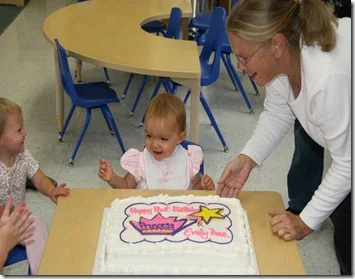
I highly recommend viewing this documentary. As a combat vet with PTSD, it’s encouraging to see more information getting to the general public.
If you have a loved one currently in the military, or ex-military, that suffers from depression related to their experiences, this documentary offers insights.
Take a minute and read the following and you’ll see why I think this is a must read for all Americans – especially on Veterans Day.

Civil War doctors called it hysteria, melancholia and insanity. During the First World War it was known as shell-shock. By World War II, it became combat fatigue. Today, it is clinically known as post-traumatic stress disorder (PTSD), a crippling anxiety that results from exposure to life-threatening situations such as combat.
With suicide rates among active military servicemen and veterans currently on the rise, the HBO special WARTORN 1861-2010 brings urgent attention to the invisible wounds of war. Drawing on personal stories of American soldiers whose lives and psyches were torn asunder by the horrors of battle and PTSD, the documentary chronicles the lingering effects of combat stress and post-traumatic stress on military personnel and their families throughout American history, from the Civil War through today’s conflicts in Iraq and Afghanistan. The HBO Documentary Films presentation debuts on Veterans Day, THURSDAY, NOV. 11 (9:00-10:15 p.m. ET/PT), exclusively on HBO.
Executive produced by James Gandolfini (HBO’s “Alive Day Memories: Home from Iraq”), Wartorn 1861-2010 is directed by Jon Alpert and Ellen Goosenberg Kent and produced by Alpert, Goosenberg Kent and Matthew O’Neill, the award-winning producers behind the HBO documentary “Alive Day Memories: Home from Iraq.” Alpert and O’Neill also produced and directed the HBO documentaries “Section 60: Arlington National Cemetery” and the Emmy®-winning “Baghdad ER.” The documentary is co-produced by Lori Shinseki.

The documentary shares stories through soldiers’ revealing letters and journals; photographs and combat footage; first-person interviews with veterans of WWII (who are speaking about their PTSD for the first time), the Vietnam War, Operation Desert Storm and Operation Iraqi Freedom; and interviews with family members of soldiers with PTSD. Also included are insightful conversations between Gandolfini and top U.S. military personnel (General Ray Odierno, commander of U.S. troops in Iraq, and General Peter Chiarelli, Vice Chief of Staff of the U.S. Army), enlisted men in Iraq, and medical experts working at the Walter Reed Army Medical Center in Washington. Gen. Chiarelli, who is working to reduce the rising suicide rate in the Army comments, “You’re fighting a culture that doesn’t believe that injuries you can’t see can be as serious as injuries that you can see.”
Bookended by haunting montages of emotionally battered American soldiers through the years, Wartorn 1861-2010 explores the very real wounds that occur as a result of combat stress, or PTSD. Among the segments of the film are:
Angelo Crapsey: In 1861, 18-year-old Angelo Crapsey enlisted in the Union Army. His commanding officer called him the “ideal of a youthful patriot.” In letters sent over the course of two years, Crapsey’s attitude toward the Civil War darkened after he experienced combat and witnessed the deaths of countless soldiers, including several by suicide. By 1863, Crapsey, was hospitalized, feverish and delirious; eventually he was sent home to Roulette, Pa. Becoming paranoid and violent, he killed himself in 1864 at age 21. His father John wrote, “If ever a man’s mental disorder was caused by hardships endured in the service of his country, this was the case with my son.” A postscript reveals, “After the Civil War, over half of the patients in mental institutions were veterans.”
Noah Pierce: More than a century after Crapsey’s suicide, 23-year-old Noah Pierce got in his truck, put a handgun to his head, placed his dog tag next to his temple and shot himself. Pierce’s mother Cheryl recalls how her son changed following two tours of Iraq, showing a photo of him “filled with hate and disillusionment.” Cheryl Pierce says, “The United States Army turned my son into a killer,” adding, “They forgot to un-train him.” In a letter he left in the truck, Pierce wrote, “I’m freeing myself from the desert once and for all…I have taken lives, now it’s time to take mine.”
World War II vets: “Combat fatigue” was considered a character flaw in World War II. In a famous story, Gen. George S. Patton slapped a soldier hospitalized with nervous exhaustion, ordering “that yellow SOB” back to the front. It took 50 years for WWII vets to be diagnosed with PTSD. Today, in the documentary, a group opens up publi cly about their traumas for the first time.
cly about their traumas for the first time.
Al Maher, who was a Lieutenant in the Army Air Corps, laments the toll his war experience took on his family life – he became abusive and took to drinking. As a result, he has not spoken to his sons in 25 years. Abner Greenberg, a corporal in the Marines who lost two best friends in Iwo Jima, kept his wartime traumas pent up and never shared them with his children until he joined a PTSD group and discovered what was wrong with him. Former Army sergeant Bill Thomas remembers shooting four Germans, and being moved when the sole survivor showed him a family photo. “How do you explain the horrors?” Greenberg asks. “It consumes you.”
Akinsanya Kambon: Marine combat illustrator Kambon served as a corporal in Vietnam for nine months. “The Marine Corps teaches you to be like an animal,” he says, adding he turned into “a mad dog.” One of his nightmarish drawings is of a soldier, eyes still flickering, whose lower torso is blown away. “It’s one of the images that I wake up screaming about,” he says, “but it won’t go away.”
Gen. Ray Odierno: In Baghdad, James Gandolfini meets with Gen. Ray Odierno, Com mander of Allied Forces in Iraq, who says that 30% of service men and women report symptoms of PTSD and explains how Vietnam helped inform today’s understanding of combat trauma. “Nobody is immune,” says Odierno, relating how his own enlisted son lost his left arm when a rocket-propelled grenade ripped through his vehicle, killing the driver. Later, at nearby Camp Slater, Gandolfini visits with U.S. Army Sgt. John Wesley Matthews, who speaks candidly about his bouts of depression, reliance on sleeping pills and contemplation of suicide.
mander of Allied Forces in Iraq, who says that 30% of service men and women report symptoms of PTSD and explains how Vietnam helped inform today’s understanding of combat trauma. “Nobody is immune,” says Odierno, relating how his own enlisted son lost his left arm when a rocket-propelled grenade ripped through his vehicle, killing the driver. Later, at nearby Camp Slater, Gandolfini visits with U.S. Army Sgt. John Wesley Matthews, who speaks candidly about his bouts of depression, reliance on sleeping pills and contemplation of suicide.
Jason Scheuerman: A member of the 3rd Infantry Division in Iraq, Scheuerman grew up in a family of soldiers. His father Chris recalls how Jason went to see an Army psychiatrist, and filled out a questionnaire admitting that he had thought about killing himself. After a ten-minute evaluation, he was told to “man up” and was ordered back to his barracks to clean his weapon. Instead, he shot himself. “It’s not just the soldier that’s in combat that comes down with PTSD,” says Chris Jr., who served in Afghanistan. “It’s the entire family.”
Nathan Damigo: In San Jose, Marine Lance Cpl. Nathan Damigo got a hero’s welcome when he returned home from Iraq. A month later, he was arrested for attacking a Middle Eastern taxi driver at gunpoint. As his mother Charilyn explains, Damigo was drunk and confused, and went into “combat mode” as he assaulted the cabbie. After a final night of freedom, Damigo makes a court appearance where he is sentenced to six years in jail. “They took him when he was 18 and put him through a paper shredder,” says his heartbroken mother. “We get to try to put all the pieces back together. Sometimes they don’t go back together.”

Herbert B. Hayden: In 1921, Col. Herbert Hayden’s Atlantic Monthly story “Shell-Shocked and After” described the “perfect hell” of being sent to the front in WWI. His nightmare continued even after he returned home six months later “back and yet not back at all.” Suicidal, Hayden checked into Walter Reed Hospital, “searching for a spark in the emptiness,” but found only newspaper clippings of tormented ex-soldiers who were not being cared for. “What was wrong with my country?” he asked.
William Fraas Jr.: Two years after his return from the current Iraq conflict, Billy Fraas is trapped by memories, transfixed by computerized photos taken over 29 months and three tours of duty. The leader of a reconnaissance team, he was sent home after PTSD symptoms surfaced, and his leg still shakes uncontrollably when he sits at the computer. Fraas’ wife Marie is frustrated by what’s become of her husband. “Even though he wasn’t shot,” she says, “he still died over there.” Adds Fraas, “I’ve seen humanity at its worst. And I struggle with that on a daily basis.”
HBO Documentary Films in association with Attaboy Films presents WARTORN: 1861-2010. Directed by Jon Alpert and Ellen Goosenberg Kent; produced by Jon Alpert, Ellen Goosenberg Kent and Matthew O’Neill; co-producer, Lori Shinseki; co-producer, archival segments, Caroline Waterlow; edited by Geof Bartz, A.C.E., Andrew Morreale, and Jay Sterrenberg; supervising producer, Sara Bernstein; executive produced by James Gandolfini and Sheila Nevins.






